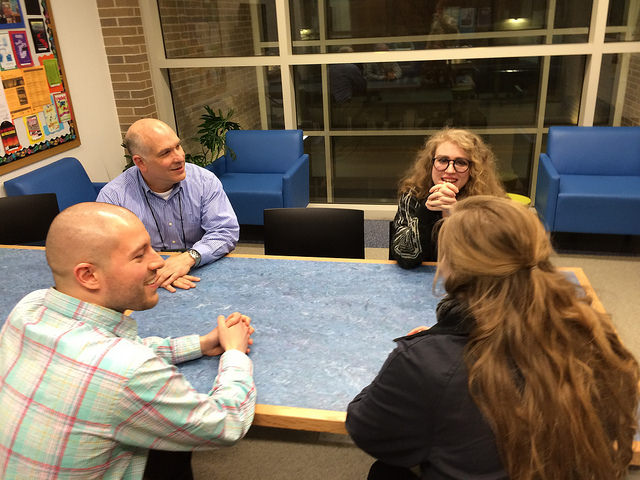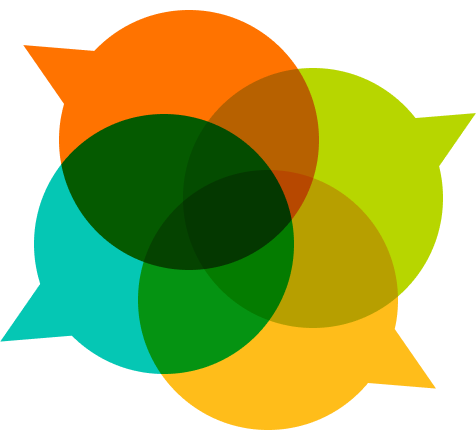
Mark, Emily, Ed, and Katherine scheming on the eve of the first learning circle. (April 2015, Edgewater, Chicago)
For decades, online learning has offered the potential to deliver cheap, flexible education to a large audience. As the field of online learning has increased rapidly in the past decade, many advocates have claimed that online learning will democratize higher education and even make universities obsolete.
However, there are several barriers that have prevented such a democratization from occurring. In order to succeed in learning online, individuals must already be web savvy, self-directed learners with a great deal of intrinsic motivation and discipline. Given this, it is not a surprise that the vast majority of those who complete online courses already have a Bachelor’s degree.
It is these two phenomena – the volume of high quality online learning resources and the mounting evidence that they have not leveled the educational playing field – that inspired the birth of P2PU and the learning circle project.
2009 - P2PU is born!
P2PU was born out of the 2007 Cape Town Open Education Declaration and has been active in the field of open education ever since. P2PU was originally driven by the belief that with adequate social support, anyone can learn almost anything online for free. P2PU led a number of open and peer-based education initiatives, and although the language of study circle was not used, P2PU was, in some ways, running study circles, but focused primarily on using an online medium. See more on Wikipedia:
2015-2016: Chicago Public Library Pilot
P2PU made a strategic decision to stop working exclusively online because we were not reaching people who stand to benefit the most from the promise of free and open online education. In hopes of reaching new audiences, we partnered with Chicago Public Library to run in-person study groups for library patrons who wanted to learn together using free online courses. This project became known as learning circles.
To support learners who lack these requirements (or just enjoy learning together), learning circles seek to position online learning in a social space. Emphasizing peer learning and academic mindsets, a diverse group of learners can now benefit from online learning as they develop cognitive skills, explore new learning strategies, and improve their digital literacy with others from their respective local communities.
Learning circles at CPL proved to be quite successful. Not only were more people completing online courses and returning week after week for adult programming, but learning circles were reaching new audiences. In the initial pilot, 65% of all participants were first time online learners. The program quickly spread to other branches, and remains a central pillar of adult programming at CPL today, as elaborated on in this Library Journal article.
2017-2018: Learning Circles Expansion
After two years, 400+ learning circles have been run in 100 communities. Learning circles are being led by public libraries and communities centers across North America and flourishing as a valuable model for public libraries in Kenya. In May of 2018, P2PU hosted a learning circle gathering in Kansas City which brought together 45 learning circle facilitators to discuss the model.
The future is yet to be written. However, if you’d like to go even further into the past and learn more about the history of the learning circle concept, which goes back hundreds of years, check out Nico’s post!
